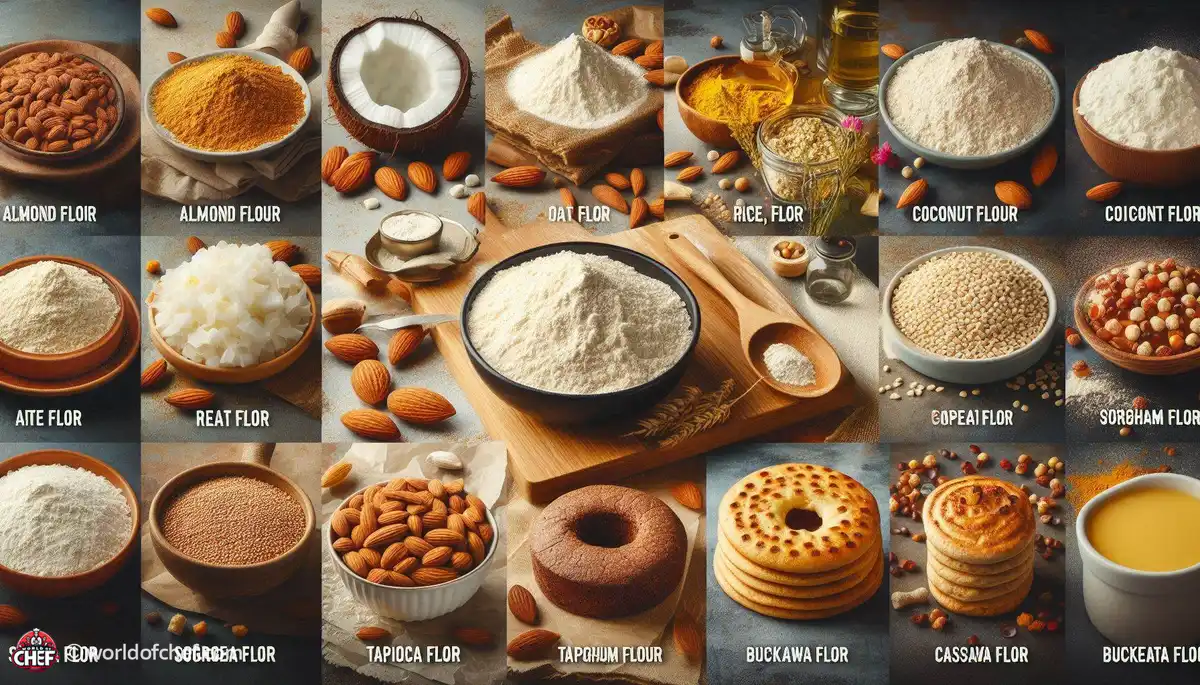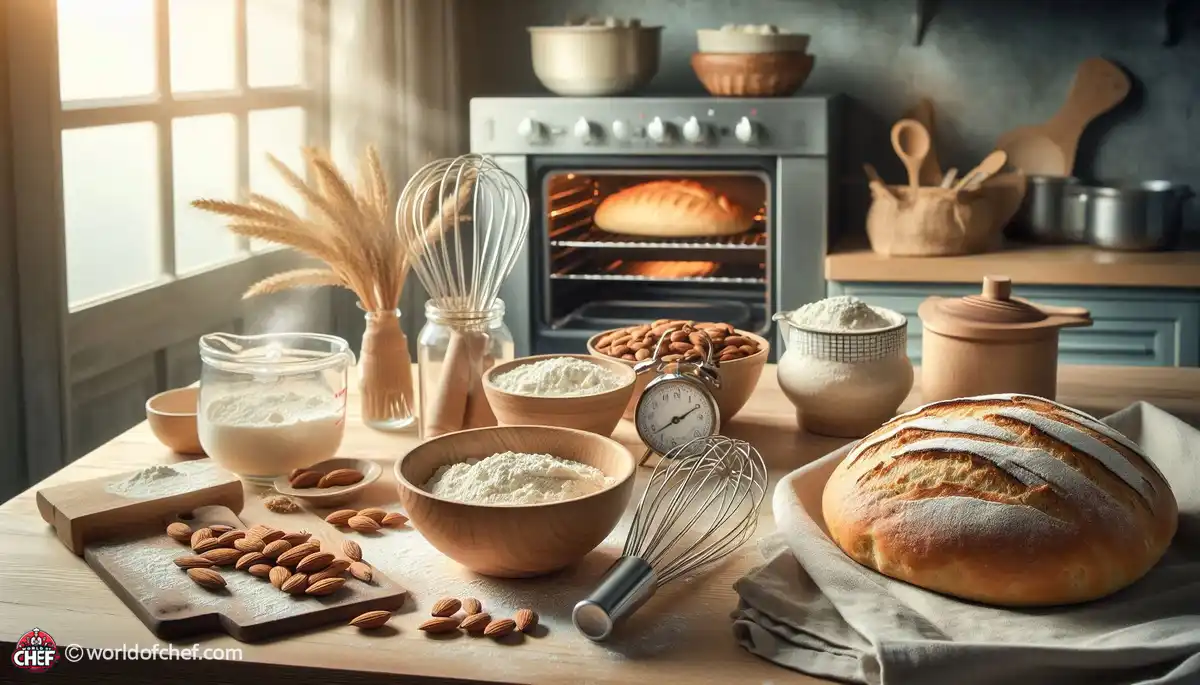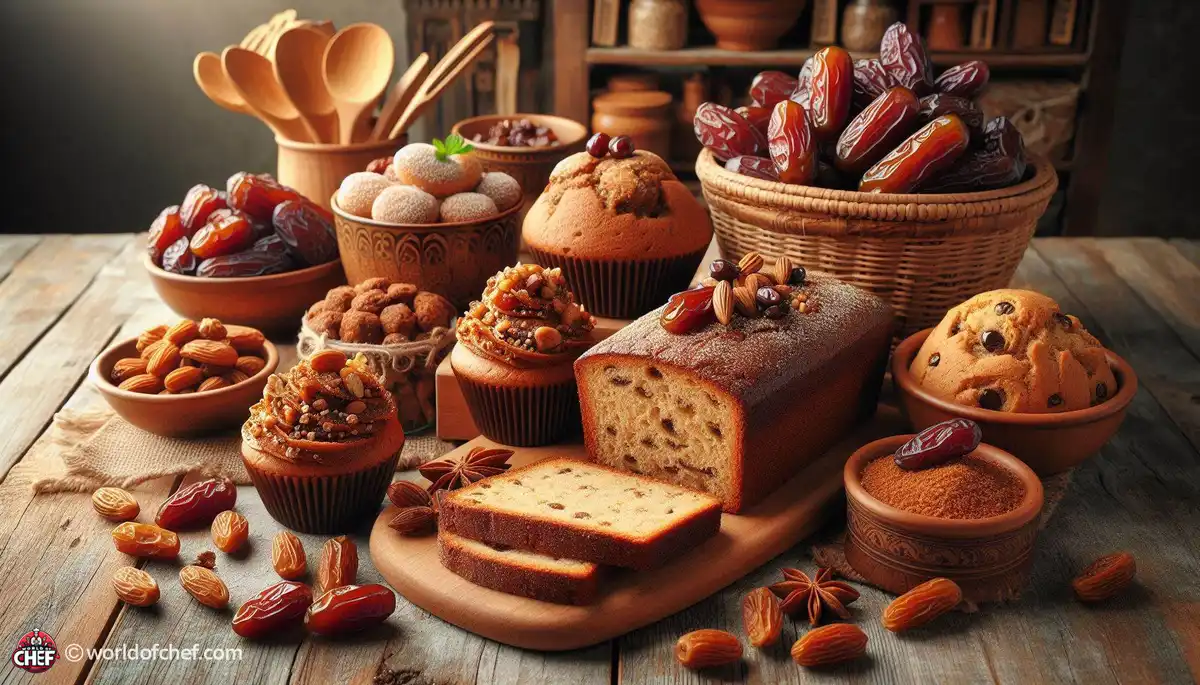
Understanding Oven Hot Spots and How to Bake Around Them
Russell Comeaux - Mar 30, 2025 - 13 min read


In the recent past, more and more people have taken to gluten-free diets for health or personal reasons. Gluten-free baking, therefore, takes center stage as a challenge with exciting opportunities. Finding the best flour substitute is the difference between perfectly textured and flavored baked goods. Let's look at some of the best gluten-free flour substitutes that will elevate your game in baking.
Gluten is a protein found in wheat, barley, and rye, which makes dough flexible and chewy. It can cause a range of uncomfortable symptoms in those with celiac disease or gluten sensitivity, so alternatives need to be found. Increasing demand for gluten-free diets has inspired creative baking solutions. Many people have learned that removing gluten enhances digestion and overall well-being.
With gluten-free living, you can easily forgo flavor and texture in your baked goods. However, with the proper gluten-free flour alternatives, you can create scrumptious cookies, cakes, and bread that are every bit as satisfying as their gluten-filled counterparts. In fact, understanding the properties of these flours is very important for successful gluten-free baking. Each has a unique flavor and texture, so experimenting can be very exciting in the kitchen.
It's also the case that gluten-free flours have a tendency to require much more recipe modification. Because it has no gluten, there has to be some other binding component. This can be accomplished through a combination of gluten-free flours and additional components, such as eggs or xanthan gum, depending on what you're preparing. Gluten-free baking is full of thrilling potential for experimentation.
Made from finely ground almonds, this is the popular choice of gluten-free bakers. It not only gives the baked goods a delicious, nutty flavor but also provides a glaze that is missing in most gluten-free recipes. Natural oils in almond flour create rich, decadent textures and are best suited to cakes, muffins, and pancakes.
When using almond flour, remember that it is denser than its wheat counterpart, and you may need to adjust your liquid ratios. It does particularly well in recipes that are naturally moist or have ingredients like bananas or applesauce. First try-to tackle almond flour by trying these specific recipes.
Almond flour, however, has another advantageous property. It is not as high in carbs as all-purpose flour and is enriched with healthy fats, fibers, and proteins. Hence, it is not only gluten-free but also a more healthy option for those that are on a diet, either to lose weight or just to eat better. Almond flour is quite an addition to your collection of flours in your pantry, giving your baked goods a nutritious twist.
Other commonly used gluten-free alternatives are dried coconut meat, from which coconut flour is produced. The subtle sweetness and its strong flavor make it fantastic in a variety of baked goods. Coconut flour tends to absorb a lot of moisture, so recipes may use more liquid and added eggs than you would using other flours. Its tendency to absorb liquid should always be kept in mind while using coconut flour to bake.
High in fiber, coconut flour is digested better, so the consumer will feel full for a longer time. Low in carbohydrates, it is suitable for use in low-carb diets or ketogenic diets. Cookies, cakes, and bread or pancakes all turn out great with coconut flour, but its intense coconut flavor makes it most useful for recipes where the flavor shines.
Baking with coconut flour is a lot about experimenting. It would start with partial substitution with coconut flour and balancing the moisture. More often than not, blending it with other gluten-free flours could make for the perfect mixture. In that way, you will have the opportunity to experience all the best things coconut flour has to offer without weighing down the final products too much on the strong coconut flavor.
Rice flour is a gluten-free multi-purpose substitute which is used greatly in Asian cuisine and all over the world. It comes in both white and brown, which has a nutty flavor and more nutritional value. The flour is excellent for thickeners in sauces or making pancakes and cookies because it gives a light feel that is desirable in much baked goods.
With rice flour, it is sometimes gritty in texture if used alone in bigger proportions. For best outcome, try blending rice flour with other gluten-free flours or starches like tapioca or potato starch, which can really give the right texture especially to the baked goods where delicate crumbs are required.
But there is more that rice flour offers; this is its nut-free status. People are not very rare nowadays who have nut allergies; some might even be allergic to almonds and coconut, both. Using such flours may send a panic spell in the houses where individuals are sensitive. Rice flour, on the other hand, will not pose threats of this sort and relatively inexpensive to be used within most of the home bakeries. Therefore, putting rice flour in the gluten-free recipes of an individual can help one enjoy its lightness along with flexibility.
Made from ground oats, oat flour has a subtle sweetness and wholesome flavor that blends with many baked products. Rich in fiber and protein, oat flour is a nutritious alternative for using in making muffins, pancakes, or cookies. But perhaps the best feature of oat flour is its ability to be replaced seamlessly with wheat flour because it replicates properties of wheat flour.
Use oat flour, considering the fact that only a certified gluten-free oat should be used. Regular oats tend to be contaminated with gluten while processing, and its intake is not advisable especially to those suffering from celiac disease or strict sensitives to gluten. From using the right oats you are able to bake items which are safe and good to eat.
Oat flour also gives a great chewiness to your baked goods. When combined with other gluten-free flours, it tends to produce a balanced texture. Many bakers prefer combining oat flour with almond flour or coconut flour for the best flavor and texture. With its wholesome quality and ease of use, oat flour is a fantastic addition to your gluten-free baking arsenal.
Produced from just the entire root of the cassava plant, cassava flour is becoming popular with the gluten-free alternative population. It has a fine texture and neutral flavor profile that makes it a workable ingredient in many various recipes. Cassava flour often can be used, cup for cup, substituting wheat flour, as an easy option for persons unfamiliar with gluten-free baked goods.
Compared with all other gluten-free flours, cassava flour possesses a very light, fluffy texture in baked goods. This makes it extremely perfect for pancakes, bread, and even cakes. Cassava flour does not absorb much moisture like some of the other gluten-free flours do, which significantly cuts down on the need to include liquid content in most recipes. However, starting with tried-and-true recipes will give you a feel for how cassava flour behaves in your specific baking environment.
Nutritionally, cassava flour is high in carbohydrates which give the person energy while it's gluten-free naturally and grain-free; however, using this cassava flour with other gluten-free flours creates the blend for baking purposes. By using these properties, its versatility in ease of using it is perfectly right to any gluten-free kitchen.
Chickpea flour is also known as gram flour or besan. It's the ground chickpea product, which is highly nutrient-rich for gluten-free baking. It has slightly more protein than several other gluten-free flours. Chickpea flour comes with a nutty and earthy flavor profile and suits baked goods with savory flavors. However, it can even be used in sweet products.
With chickpea flour, you should know that a dish is usually overwhelmed when it is used; for this reason, it needs blending with milder gluten-free flours such as oat or rice flour so you get a balanced flavor out of your baked products. The mixture would yield you a better taste of baked products. Chickpea flour is more often found when baking pancakes, muffins, and even glutens-free pizza crust.
Another wonderful attribute of chickpea flour is that it's highly versatile. It may be used for thickening soups or sauces, but it is also able to bind elements in veggie burgers together. Therefore, it becomes a good item to maintain in the kitchen. This way, you can cook sweet and savory recipes while elevating and providing nutrients with chickpea flour.
Tapioca flour, an extract from cassava root, is a starch which does not contain gluten, therefore adding a chewy texture to baked goods. Usually used as a binder in gluten-free recipes, it improves the general texture and stability of such baked goods. It does very well in bread recipes, pizza crusts, and desserts, giving that delightful chewiness so hard to achieve with other gluten-free flours.
What is interesting about tapioca flour is that it forms a very attractive crust when baked in certain baked goods. For this reason, it is useful when preparing pies and pastries. Additionally, being mostly starch, this type of flour is perfectly blended with others to maintain a recipe well-balanced. Mixing tapioca flour with flours like chickpea or almond will result in a better satisfying and rounded baked product.
Tapioca flour is gluten-free by nature and used in most traditional recipes from many cuisines, including Brazilian cheese bread. The best of this ingredient makes it a standby staple in most kitchens for gluten-free preparations. And when you're experimenting with textures for your baked goods, tapioca flour is definitely a great ingredient to explore.
For those of you who want the ease and convenience of a ready-made option, gluten-free all-purpose flour blends are just the answer. These blend together numerous gluten-free flours with starches and mimic much of the qualities of a wheat flour that you traditionally work with, and, being a direct one to one substitute for most of your recipes is perfect for transitioning bakers.
Many commercial gluten-free all-purpose flour blends contain a mix of rice flour, tapioca flour, and potato starch. These give good texture and flavor. They can be very different in taste and performance, but you may be able to find the best one for your baking by trying different brands. Some even have xanthan gum or guar gum added, which increases the binding properties, so you will find it easier to bake.
Using an all-purpose gluten-free blend lets the baking be very friendly and familiar for many traditional bakers. This avoids having to think of using multiple flours while coming up with baked goods; at the same time, there's always the aspect of ingredients to ensure you will have the correct product suitable for your dietary needs. All-purpose gluten-free is, therefore, quite excellent and delicious if made just right.
Sometimes, baking gluten-free can seem intimidating, but with the right tips and tricks, amazing results await. The first thing a person needs to understand when baking gluten-free is that different gluten-free flours behave differently. Each gluten-free flour has its individual characteristics, and mixing certain types of flours sometimes produces the best results; for instance, nut flours mixed with starchy flours balance the textures and flavors.
Don't be afraid to experiment! Gluten-free baking is a bit of a trial-and-error process at times. Start by adjusting your favorite recipes, swapping a portion of the flour for your gluten-free of choice. Keeping a record of your experiments will refine your techniques and help you keep track of what really works best for different recipes. This can turn an often tedious chore into an exciting adventure.
Lastly, pay attention to moisture levels. Many gluten-free flours absorb liquids differently than wheat flour, which causes baked goods to be dry or crumbly. Additional eggs, yogurt, or applesauce can add more moisture and help the texture. With these tips in mind, you will be well on your way to mastering gluten-free baking and creating delicious treats that everyone can enjoy.
Exploring gluten-free flour alternatives can open up a whole new world in the kitchen. From the nutty richness of almond flour to the lightness of tapioca flour, each one has its unique benefits and flavors. Once you understand the properties of these flours and begin experimenting with combinations, you can make some delicious gluten-free baked goods that could rival the best traditional recipes. Whether you are just starting to bake gluten-free or are a seasoned pro, these options will surely inspire creativity and strengthen your repertoire. Now, pull out your ingredients and get baking delicious gluten-free goodies!

Russell Comeaux - Mar 30, 2025 - 13 min read

Alexis Larose - Mar 25, 2025 - 15 min read

Hailey Morrill - Mar 21, 2025 - 18 min read

Bobby McKelvey - Mar 18, 2025 - 12 min read